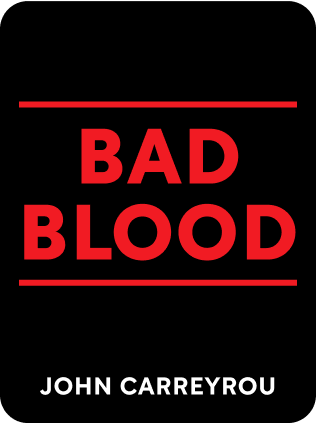

This article is an excerpt from the Shortform book guide to "Bad Blood" by John Carreyrou. Shortform has the world's best summaries and analyses of books you should be reading.
Like this article? Sign up for a free trial here .
What is the Elizabeth Holmes book? What did Elizabeth Holmes do and why?
In the Elizabeth Holmes book Bad Blood, author John Carreyrou explains how Holmes’ charismatic leadership defrauded investors. Holmes’s company, Theranos, never delivered their product despite big promises.
Read more about the Elizabeth Holmes book and how it explains her deception with Theranos.
Elizabeth Holmes: Book Questions Everything
It has to start with Elizabeth Holmes, who dreamed big.
- She clearly had large ambitions. When asked what she wanted to be at 10 year old, she answered “a billionaire.”
- When her dad suggested she get a PhD, she declined. Instead, she said, “I want to make money.”
- It might be reasonable to assume Holmes started with good intentions. After a summer in Asia during the SARS period, she researched the patent literature and proposed a way to test blood with small amounts of blood. Her adviser was impressed and encouraged her to start a company.
- But this same ambition brought her down a slippery slope of deception.
Theranos had a vision people wanted to believe in – “detect diseases early so no one has to die unnecessarily.” All types of stakeholders saw what they wanted to see in it, allowing large suspension of disbelief.
- Investors saw a huge financial opportunity. The medical testing market is huge – allowing patients to test at home, and using the resulting data to inform medical decisions, makes it even bigger.
- Patients and their families saw better decisionmaking and less pain.
- The public saw a thrilling female founder who could be the next Steve Jobs. They wanted to celebrate a brilliant female innovator in an age of female empowerment.
- Partners like Walgreens and Safeway saw a way to compete against competitors like CVS, and to rejuvenate their financials. So they partnered with Theranos to roll out blood-testing clinics at their locations.
- Senior mentors like George Schultz, General Mattis saw a granddaughter-like figure to mentor. So they lent their name to Theranos as advisors.
- Anyone with equity (employees, investors, and advisory board included) had a huge incentive to believe the company would work.
Elizabeth Holmes practiced charismatic techniques to win over supporters.
- Elizabeth spoke sincerely and enthusiastically about the mission. It gave the impression that there was no way someone with this sincerity could be beguiling.
- To the Walgreens CFO, Elizabeth gave a gift of an American flag “flown over Afghanistan” with a dedication to Walgreens written on it.
- Many people repeated: “she had this intense way of looking at you while she spoke that made you believe in her and want to follow her.” Here’s an example of Holmes speaking in a Theranos promotional video.
- She apparently affected her voice to be a strikingly low baritone, possibly convinced it would lead to better results in a male-dominated world.
The Elizabeth Holmes book Bad Blood helped explain the history of deception and fraud in the company.

———End of Preview———
Like what you just read? Read the rest of the world's best book summary and analysis of John Carreyrou's "Bad Blood" at Shortform .
Here's what you'll find in our full Bad Blood summary :
- How a 19-year-old Stanford dropout created a fraudulent company that deceived savvy investors
- What Theranos claimed their proprietary technology could do
- How psychological biases could cause you to fall for such a deception






